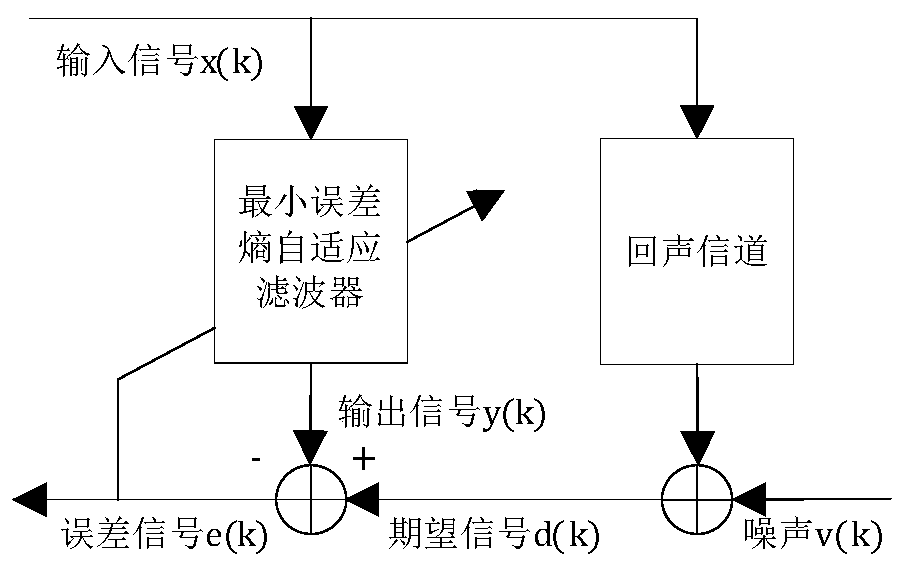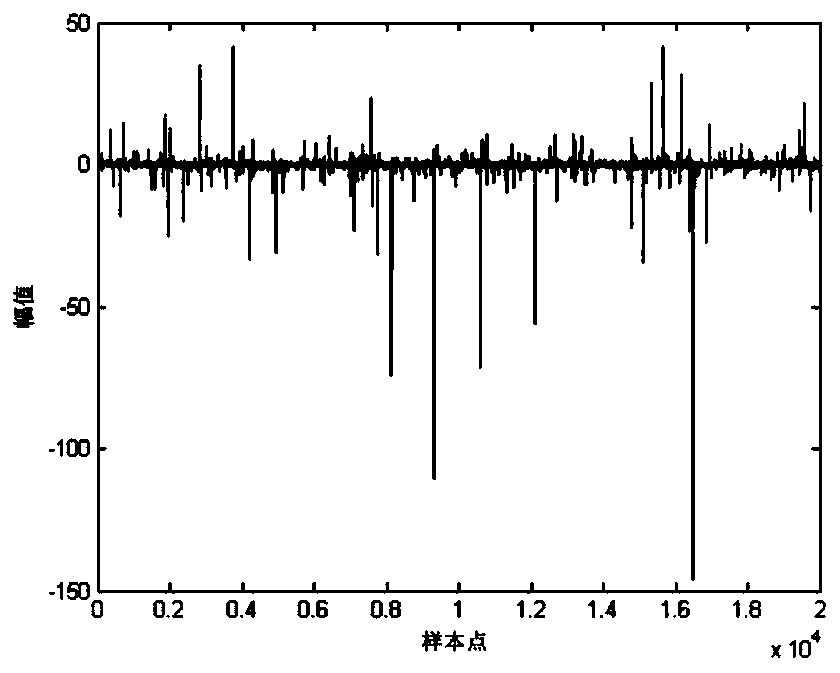Proportional affine projection method based on minimum error entropy
An affine projection and proportional technology, applied in baseband system components, speech analysis, instruments, etc., can solve problems such as slow convergence speed
- Summary
- Abstract
- Description
- Claims
- Application Information
AI Technical Summary
Problems solved by technology
Method used
Image
Examples
Embodiment Construction
[0060] 1. Proportional minimum error entropy algorithm
[0061] 1.1 Minimum error entropy criterion
[0062] The Shannon entropy of a random variable X is defined as:
[0063]
[0064] where N represents the number of data, P k Represents the probability of the kth data. The α-order Renyi entropy derived from Shannon entropy can be expressed as:
[0065]
[0066]
[0067] When α=2, H 2 (X) is the Renyi quadratic entropy of the random variable X. V α (X) is the α-order information potential energy. But in general, it is usually impossible to get an accurate probability density function, so the estimated value of the probability density obtained by using the Parzen window method is:
[0068]
[0069] where K σ is the kernel function, and σ is the width of the kernel function. In practical applications, the choice of kernel function will also vary according to the actual situation. Generally, the commonly used kernel functions include polynomial kernel funct...
PUM
 Login to View More
Login to View More Abstract
Description
Claims
Application Information
 Login to View More
Login to View More - R&D
- Intellectual Property
- Life Sciences
- Materials
- Tech Scout
- Unparalleled Data Quality
- Higher Quality Content
- 60% Fewer Hallucinations
Browse by: Latest US Patents, China's latest patents, Technical Efficacy Thesaurus, Application Domain, Technology Topic, Popular Technical Reports.
© 2025 PatSnap. All rights reserved.Legal|Privacy policy|Modern Slavery Act Transparency Statement|Sitemap|About US| Contact US: help@patsnap.com



